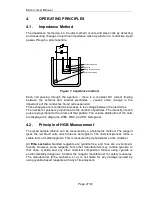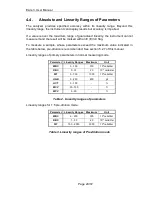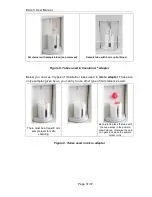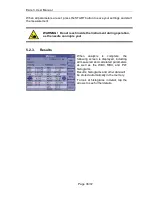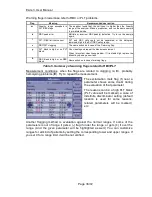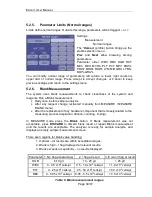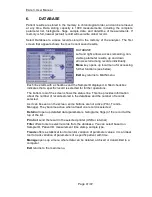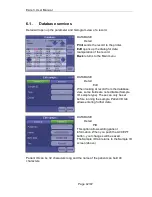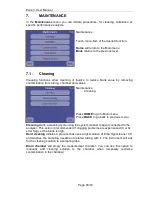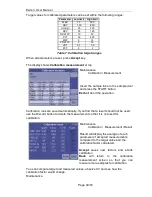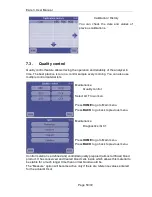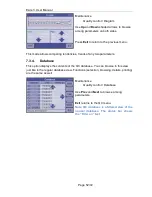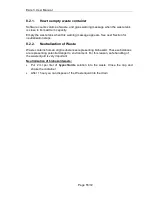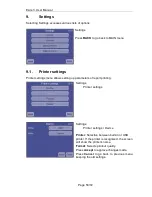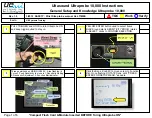
ELite 3, User Manual
Page 41/72
6.
DATABASE
Patient results are stored in the memory in chronological order, and can be retrieved
at any time. Data storing capacity is 1000 measurements, including the complete
parameter list, histograms, flags, sample data, and date/time of measurements. If
memory is full, newest (actual) record will overwrite oldest record.
Select Database to access records stored in the memory of the analyzer. The first
screen that appears shows the most recent saved results.
DATABASE
Left and right arrows access remaining, non-
visible parameter results, up and down
arrows scroll among records individually.
Menu key opens up local menu for accessing
further functions (see below).
Exit key returns to MAIN menu.
Each line starts with a checkbox and the Sample ID displayed. A filled checkbox
indicates that a specific record is selected for further operations.
The bottom row of the screen shows the status line. This line provides information
about the number of records stored in the database and the number of records
selected.
As it can be seen on the screen, some buttons are not active (Print, Trends,
Manage). They become active when at least one record is selected.
Detail will open up detailed data (parameters, histograms, flags) of the record at the
top of the list.
Print will send the result to the selected printer (USB or internal)
Filter offers tools to select records from the database. You can select based on
Sample ID, Patient ID, measurement time stamp, sample type.
Trends offers a statistical tool to monitor variation of parameter values. It is an ideal
tool to track variation of parameters of a specific patient with time.
Manage opens up a menu where data can be deleted, archived or transmitted to a
computer.
Exit returns to the main menu.

